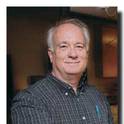
Gopher tortoises on lands to be developed may be translocated as a conservation measure, sometimes to areas already occupied by the species. We assessed the success of this type of translocation by monitoring the movements, spatial positioning, health, and reproductive activity of translocated and resident individuals at a site in central Florida from 2001 to 2004. By several criteria, the translocation was a success. Most translocated individuals remained on-site for at least one year, home ranges of resident individuals were not significantly different before and after translocation, home ranges of translocated individuals fit within the range of estimates reported in the literature, and neither body condition nor reproduction of either group of individuals could be shown to be affected by the translocation. on the other hand, several resident individuals altered their habitat use after translocation and the spatial positioning of resident individuals was different than that of individuals throughout; so, some potential exists for future off-site movements. The study illustrates two practical problems in assessing translocation success: lack of adequate pre-translocation data for both resident and translocated individuals, which interferes with documentation of translocation effects, and the necessarily small sample sizes, which reduces statistical power.
- body condition,
- Gopherus polyphemus,
- home range,
- radiography,
- radio telemetry,
- translocation
Available at: http://works.bepress.com/earl_mccoy/5/
